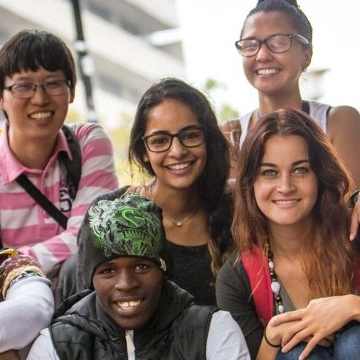
News

Take students’ spend seriously, urges brand guru
ANT KATZ
This is according to Student Village’s fifth Annual Student Spend Report, called “A Brand Me Generation, Buying Experiences”, which was published last month.
One of the most significant trends Student Village picked up in the attitude of students, is that “this year students have had an almost narcissistic change. Previously, it was ‘what brand defines me’ – now it is ‘what brand compliments me’,” says Ronen Aires, co-founder and CEO at Student Village.
The survey also picked up some huge movement in trends. “Students now perceive and use brands to support their personal brand by putting themselves first and then positioning brands to support who they are,” said Student Village co-founder and director Marc Kornberger. Clothing and footwear spend has increased substantially, almost threefold since the 2015 report.
Also, says Kornberger, “students are focused on emancipating, enhancing and elevating themselves by buying experiences and creating memories”.
To do this, today’s students need more money. And they are prepared to work for it. The million-odd students rely on part- and full-time work for 29 per cent of their income.
The average male student of 2017 is spending R2 917 a month, while their female counterparts spend a little less, at R2 612.
Kornberger says students have become less accepting of information presented to them, choosing rather to challenge the status quo. They are intent in “making brands work harder for their attention”.
Aires agrees: “Brands feature in social media feeds for a few seconds,” he says. And it is that which should drive brands to being more authentic and relevant. “They have got to be smart and agile in the way they communicate.”
Marketers must realise that younger people are in a perpetual state of “continuous partial attention”, says Aires. In an age where people seek immediate gratification, brands must be sensitive or risk getting bitten. “Brands must take students seriously,” he stresses.
Students, according to Student Village, have a combined annual spend of R32 billion – and Jewish students would seem to come in at the top end when it comes to individual spending and saving.
“Jewish students should be taken seriously by brands,” says Aires. “They are future or current consumers and trendsetters.” He refers to them as “opinionistas” and says they are a force to be reckoned with. “They are future leaders and employers.”
On average, South Africa’s 985 212 students have more disposable income to spend than the average South African – to the tune of about R1 400 a year.
“While we speak about youth in their entirety, there is no average student,” says Aires. However, he adds, students’ spending habits mirror our society in general.
The latest report also shows that students are doing whatever it takes to work to support their lifestyle ideals, giving rise to the “gig economy” – the economy of the digital age, says Kornberger.
Johannesburg-based students in general live at home, says Aires, and therefore have lower cost-of-living expenses. This is even more true of Jewish students, he says, and it means that “Jewish students need to hustle less” to acquire the money they need to meet their lifestyles.
The Jewish youth market fit into what pundits refer to as the “tech profile” and, as such, are early adopters of new tech and platforms. They fit in the group of high spenders, who spend more than the average of R2 700 a month, he says.
A Jewish student, who asked not to be named, agrees that Jewish students are early adopters and says: “Say a new iPhone comes out, a Jewish student would get it more easily, and earlier, than the average student.”
The 2017 study shows, however, that male students spend an average of R554 per month on clothing and footwear, while young women spend just R428. Male students spend an average of R261 a month on liquor, while girls curtail themselves to R211.
Female students, on the other hand, spend more in categories such as toiletries and grooming, at R193 per month (vs their male counterparts at R73); and contraception, where they spend an average of R118 (R85).
The study shows that premium clothing brands favoured by students include Cotton On, Factorie, H&M, Woolworths, sportscene and Markham. In terms of cell phones, Samsung has a commanding lead of 49 per cent, followed by Huawei at 15 per cent and iPhone at 11 per cent.
Between 2015 and 2017, online shopping by students grew phenomenally, according to the report. Students spent an average 18 per cent of their income online in 2015, which has grown to a huge 40 per cent this year.
Buying travel and electronics online, however, grew more slowly. The average student’s online spend grew from 17 to 22 per cent and from 16 to 22 per cent respectively.
The report shows that students generally have more disposable income than their parents. And, while they do save, it’s short-term saving for their next purchase, says Aires; more students want to move out of home compared to previous surveys.
Speaking from his own experience, Aires says one of the main things Jewish students save for, is to travel.




